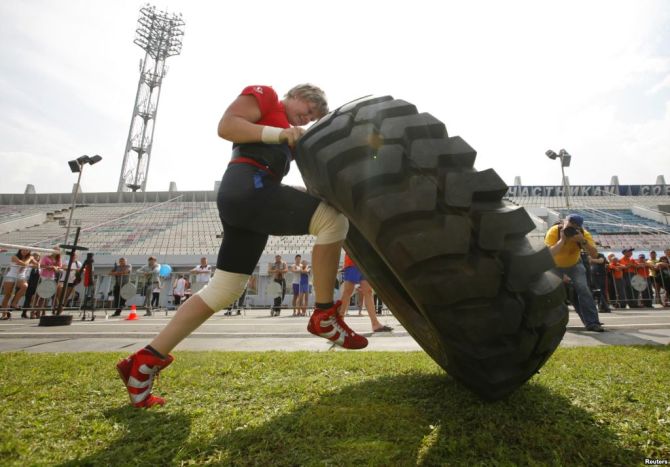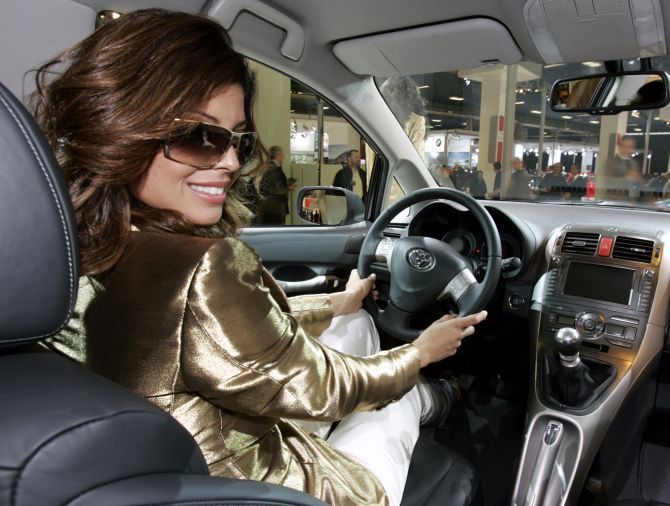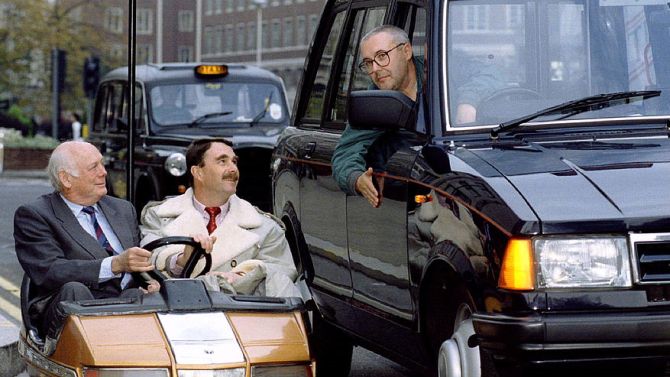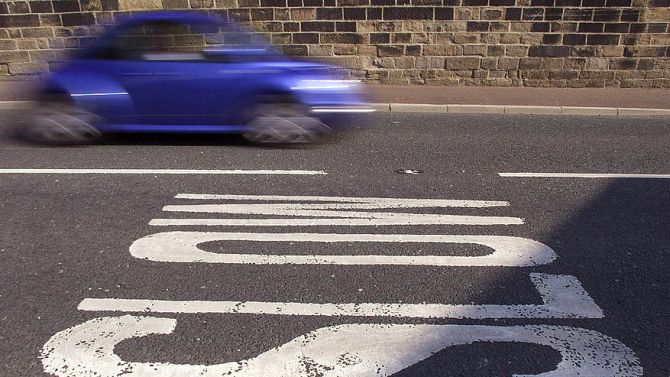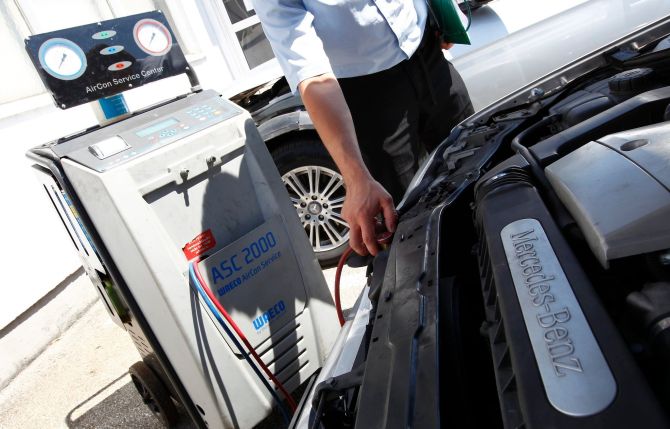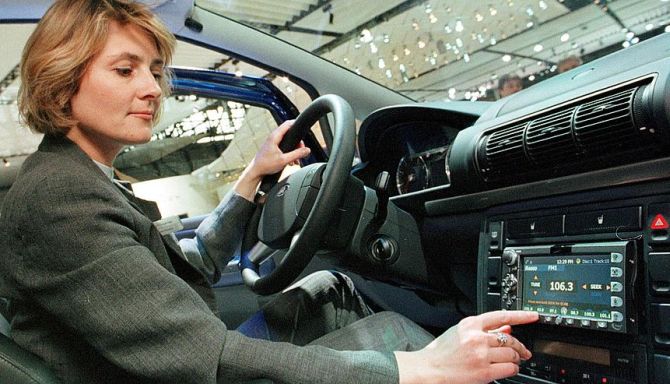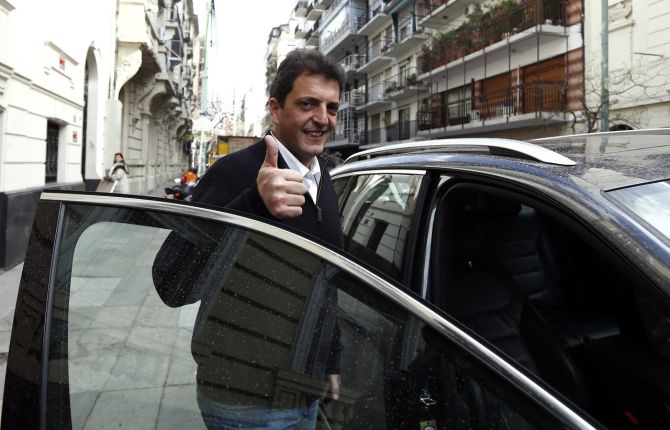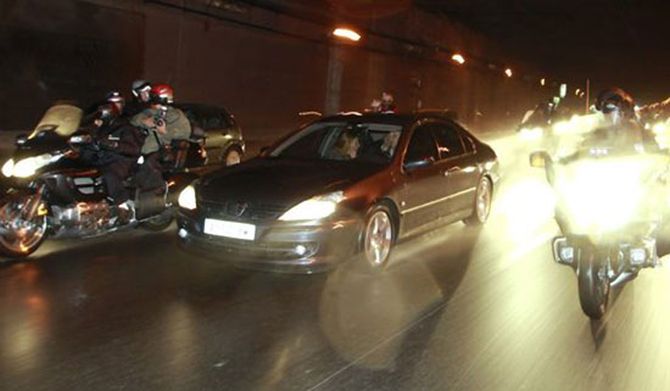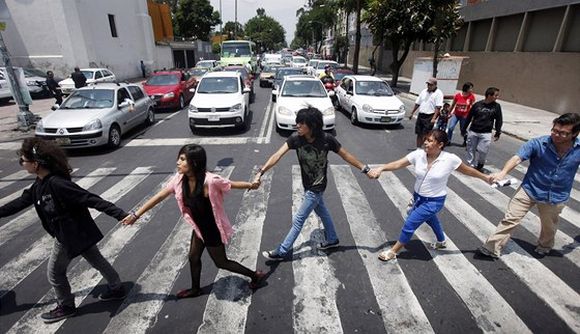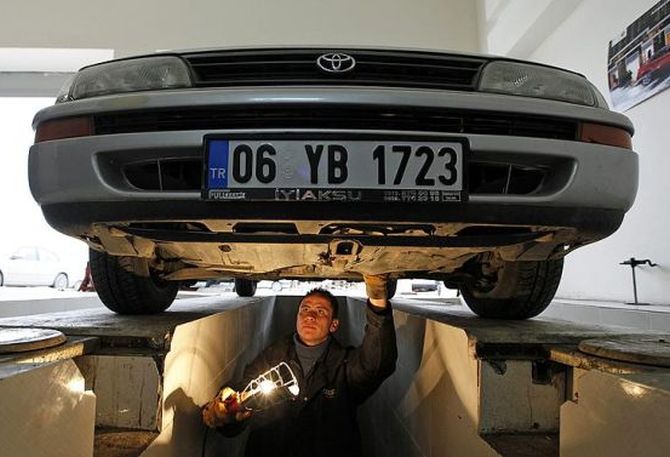 | « Back to article | Print this article |
14 simple tricks to get the best mileage from your car
In May this year, Maruti Suzuki held the 'Dzirable Mileage Rally' in 31 cities across the country. The purpose of the event was to demonstrate the Dzire's ‘incredible' mileage. Participants were provided with maps and were asked to follow a predefined route in and around cities.
After the rally Maruti declared the names of people who achieved maximum mileage on the car. The results surprised everyone.
One of the participants, Gurdeep Singh, driving DZire diesel achieved a mileage of 45.8 kmpl. Another person, Shrirang Chindarkar, driving the DZire petrol managed a fuel economy figure of 42.1 kmpl.
How did they managed the feat? Maruti claims that the figures were achieved by following the regular driving techniques such as accelerating and braking gradually, maintaining a steady speed of 50 kmph, use of proper gears and so on.
Well, Maruti’s numbers can be disputed. However, following proper driving techniques can certainly help you to achieve better mileage.
Let’s look at some ways that can improve the fuel efficiency of the car.
Click NEXT to read more…
Powered by ![]() To read more such stories Click Here!
To read more such stories Click Here!
14 simple tricks to get the best mileage from your car
Kick the Tires
According to the US Energy Information Administration, tire efficiency could save approximately 800,000 barrels of oil a day.
Check your tire pressure about once a month; a tire loses about 0.15 bars of pressure each month; and make sure you do it when they are cold.
Inflate your vehicle's tires to the pressure recommended by the manufacture and make sure your wheels are properly aligned.
Click NEXT to read more...
Powered by ![]() To read more such stories Click Here!
To read more such stories Click Here!
14 simple tricks to get the best mileage from your car
Don't Idle the Engine
If you're stuck in a jam, switch the engine off if you expect to be there for more than a minute or two.
By having the engine switched off, even for a short period, you will save more fuel than is lost from the burst of fuel involved in restarting the engine.
Click NEXT to read more…
Powered by ![]() To read more such stories Click Here!
To read more such stories Click Here!
14 simple tricks to get the best mileage from your car
Low Gears
In a manual vehicle, check your revs and change up gears before 2,500rpm (petrol) and 2,000rpm (diesel). At these levels, the engine is most fuel-efficient.
Automatic transmissions will shift up more efficiently if you ease back on the accelerator once the car gathers momentum. When driving at a constant speed, try to use the highest gear possible.
Click NEXT to read more…
Powered by ![]() To read more such stories Click Here!
To read more such stories Click Here!
14 simple tricks to get the best mileage from your car
Keep Your Distance
Drive at a good distance from the car in front so you can anticipate and travel with the flow of traffic. This avoids unnecessary acceleration and repetitive braking that ends up wasting fuel. It's also far safer.
About three seconds between you and the car in front is the minimum safe distance. If you see traffic stoppages ahead, take your foot off the accelerator and let the engine's drop in power slow the vehicle. Don't just hit the brakes at the last minute.
Click NEXT to read more…
Powered by ![]() To read more such stories Click Here!
To read more such stories Click Here!
14 simple tricks to get the best mileage from your car
Slow Down
Over half of British motorists surveyed in early 2011 said they would slow down in response to gas price rises.
That’s because fuel consumption increases significantly over about 90 kmph. At 110 kmph your car uses up to 25 per cent more fuel than it would cruising at 90 kmph.
Using the cruise control on long stretches of highway can save fuel by helping your car maintain a steady speed.
Click NEXT to read more…
Powered by ![]() To read more such stories Click Here!
To read more such stories Click Here!
14 simple tricks to get the best mileage from your car
Turn off the Air Con
Use air conditioning (AC) sparingly as it significantly increases fuel consumption. Air conditioners can use about 10 per cent extra fuel when operating.
However, at speeds of over 80 kmph, air con is better for fuel consumption than an open window as this creates aerodynamic drag.
Alternatively, at higher speeds use the air vents, but without air con. Park in shady areas as it reduces the need for air conditioning.
Click NEXT to read more…
Powered by ![]() To read more such stories Click Here!
To read more such stories Click Here!
14 simple tricks to get the best mileage from your car
Lose Weight
No, not you. But it’s worth slimming down your car. Excess weight uses more fuel so remove unnecessary stuff from inside the vehicle.
An extra 48kg of weight can increase your fuel bill by two per cent. But make sure to keep the spare tire, jack and tools handy. There's no need to compromise on safety.
Click NEXT to read more…
Powered by ![]() To read more such stories Click Here!
To read more such stories Click Here!
14 simple tricks to get the best mileage from your car
Reduce Drag
There’s a good reason that the fastest cars on the planet look like bullets or airplanes. Streamlined, aerodynamic shapes reduce friction and wind drag and therefore the amount of energy required to power the vehicle.
Roof racks, bike carriers, and roof boxes significantly affect your car's aerodynamics and reduce fuel efficiency, so remove them when not in use.
Having the windows or sunroof open also increases air resistance and fuel consumption, sometimes by over 20 per cent at higher speeds.
Click NEXT to read more…
Powered by ![]() To read more such stories Click Here!
To read more such stories Click Here!
14 simple tricks to get the best mileage from your car
Turn Off Gadgets
Be sure to shut off all power-consuming accessories before turning off the ignition. That way, you decrease engine load the next time you start up.
Items that plug into your vehicle's cigarette lighter, such as TV consoles for mini-vans and SUVs, can cause the alternator to work harder to provide electrical current.
Turn off your heated rear windscreen, demister blowers and headlights when you don't need them.
Click NEXT to read more…
Powered by ![]() To read more such stories Click Here!
To read more such stories Click Here!
14 simple tricks to get the best mileage from your car
Leave Promptly
Make sure you’re ready to leave before you start the engine. Unless you live in very cold conditions, most cars don't need to be ‘warmed up’ by idling before setting off.
Use a scraper to get rid of frost and ice on the windshield rather than using the car heater. In really freezing weather, try a block heater to keep the engine oil and coolant warm so the car is easier to start and runs fuel-efficiently.
Click NEXT to read more…
Powered by ![]() To read more such stories Click Here!
To read more such stories Click Here!
14 simple tricks to get the best mileage from your car
You're Not a Getaway Driver
Avoid aggressive driving such as violent, tire-squealing starts straight out of a gangster movie. These waste fuel, as does unnecessarily hard braking.
In city driving, nearly 50 per cent of the energy needed to power your car goes to acceleration. So take it easy, you’ll get there.
Change up through the gears and into top gear as soon as possible without accelerating harder than necessary. Driving in a gear lower than you need wastes fuel.
Click NEXT to read more…
Powered by ![]() To read more such stories Click Here!
To read more such stories Click Here!
14 simple tricks to get the best mileage from your car
Share the Load
There’s no need to drive alone. With a little bit of planning and good communication it’s possible to save on fuel and CO2 emissions, and ease congestion on the roads.
Why have three or four cars from one street or apartment block travel to the city centre or the local school when one will do?
Each litre of fuel used releases more than 2.5kg of CO2. Whether commuting to work with colleagues or on a day out with friends car sharing makes perfect sense.
Click NEXT to read more…
Powered by ![]() To read more such stories Click Here!
To read more such stories Click Here!
14 simple tricks to get the best mileage from your car
Avoid Short Journeys
Engines take time to warm up to optimum fuel-efficiency and catalytic converters that reduce emissions can take up to eight kilometres to become effective. So vehicles are least fuel efficient and most polluting at the start of trips and on short trips.
Unfortunately, more than half of all car trips in Europe are less than five kilometres according to the European Commission. Try to combine short trips into one longer trip or, even better, walk or cycle.
Click NEXT to read more…
Powered by ![]() To read more such stories Click Here!
To read more such stories Click Here!
14 simple tricks to get the best mileage from your car
Service Your Car
Treat your vehicle with care. Get it serviced regularly, according to the manufacturer's instructions. A poorly tuned engine can use up much more fuel and produces more emissions than one that is running properly.
Dirty air filters can also increase fuel consumption as can dirty engine oil. Change the oil when required and make sure you are using the correct type of oil for your engine.
Powered by ![]() To read more such stories Click Here!
To read more such stories Click Here!

